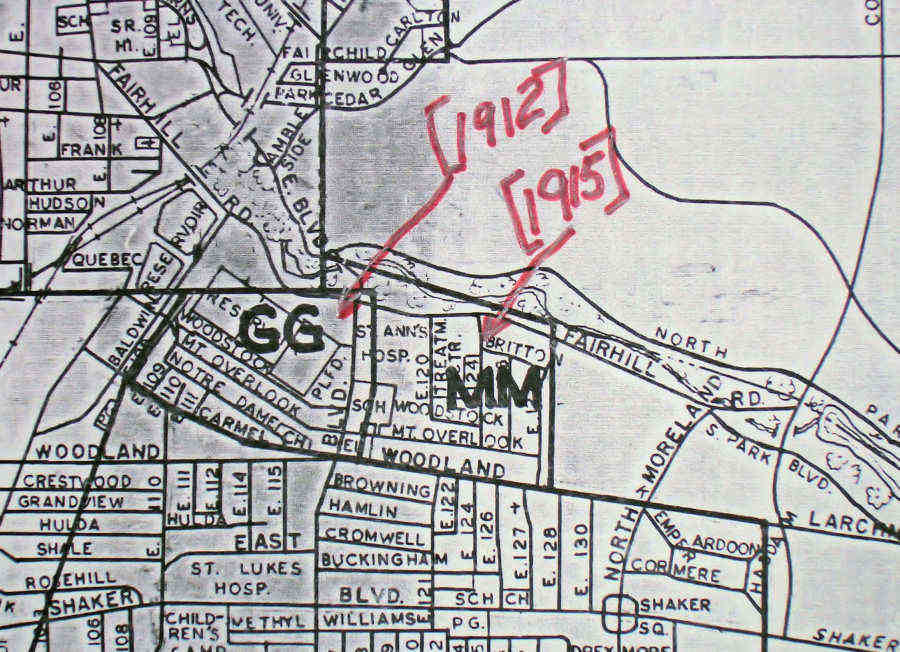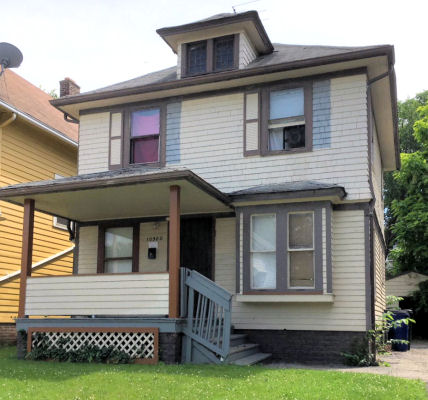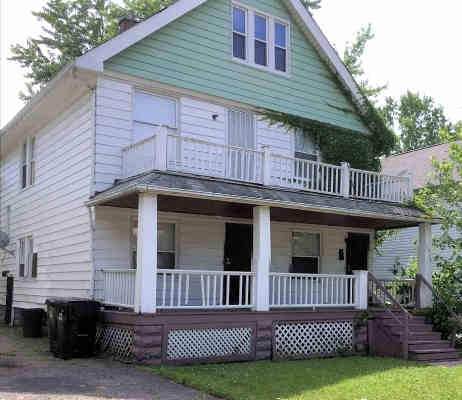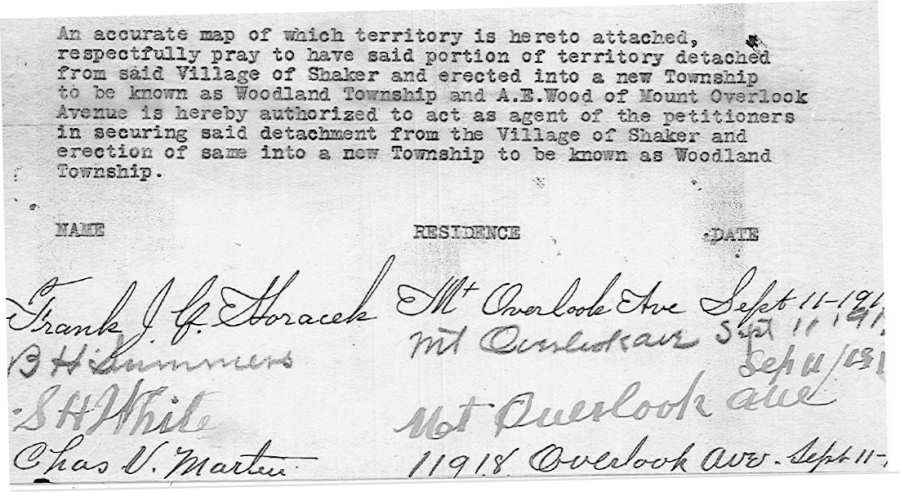|
After March 2, 1912, with area GG in Cleveland, area MM was
contiguous to the city and could ask to be annexed. It did not. When
County Archivist Dr. Judy Cetina showed me a petition from MM
voters, I saw their determination not to be in Cleveland. Dated September 11, 1912
and signed by 21 voters, a few with addresses east of East
127th, it was a request to be detached from Shaker Village and
to become Woodland Township. |
As the commissioners wrote in
their resolutions that established them, townships should not be too small.
Villages with thousands of residents such as Glenville and Newburgh City, south of MM, were joining
Cleveland, with its more than a half-million residents.
The
commissioners were not going to create a new small village next to the city. They did not act on
area MM's
petition, part of which is shown below. |
|
MM's voters did not want to be part of Cleveland, or to say it
differently, they wanted to live in a suburb. Yet voters in area GG,
west of East Blvd. had asked to be annexed to Cleveland soon after they
became residents of Shaker Village. What would account for the
very different views of the MM voters, who lived east of East Blvd.
and along Fairmount Road? Our pages have copies of the 1910 census forms for the village.
Because the census enumerator walked the streets visiting each
residence, the forms were in nearly perfect west-to-east order. Forms
1, 2 and 4 were for area GG, 5 and 6 were for area MM.
For all male heads of household we made this tally: Was he born in the United States or
some other
English-speaking country? The results, shown in the table below,
reveal a striking difference between those living on opposite sides of East Blvd
- between GG and MM voters. That wide boulevard was a
cultural divide.
|
Male head of
household born
in English-speaking country |
| AREA |
FORMS |
YES |
NO |
| GG |
1, 2, 4 |
19% |
81% |
| MM |
5, 6 |
96% |
4% |
|
The homeowners in area MM were in the "heights". They could look down the
hill at a crowded city covered with a carbon haze, with its large and
fast-growing
immigrant population and so many school children from homes where
a language other than English was spoken. MM voters may have seen
themselves as settled, successful and suburban, wanting their sons and
daughters to go to a school with children from homes like
theirs.
As for schools, there was good news. In place of three rooms in the Van Sweringen
office at Lee Road and
Shaker. Shaker Heights would soon
have a new, larger
school, nearly a half mile closer.
 |
|
Plain Dealer July 3,
1912
Boulevard Elementary opened in 1914. |
By becoming independent, could they send
their children there? MM's voters may not have
expected the county to grant their petition but they
weren't ready to lose their suburban status. |
|





